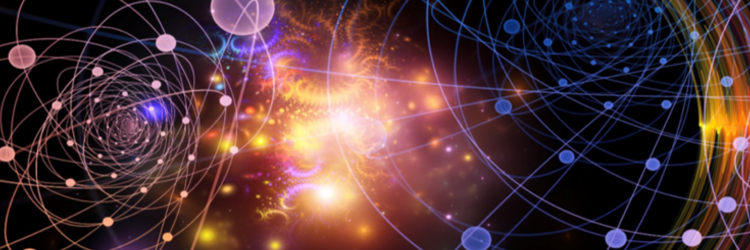Pritzker Researchers “Split” Phonons for New Type of Quantum Computer
Quantum mechanics laws assert that quantum particles are indivisible and cannot be split. However, researchers at the Pritzker School of Molecular Engineering (PME) at the University of Chicago are looking into what happens if you try.
In two experiments, researchers used a device called an acoustic beamsplitter to “split” phonons and demonstrate their quantum properties. The beamsplitter can be used to both induce a special quantum superposition state for one phonon and create interference between two phonons, paving the way to create a new kind of quantum computer. Results are newly published in the journal Science.
Researchers used phonons with a million times higher pitch than can be heard with the human ear. The team created a beam splitter that splits a beam of sound in half, transmitting half and reflecting the other half back to its source. The whole system operates at extremely low temperatures and uses individual surface acoustic wave phonons that travel on the surface of a material, in this case, lithium niobate. When the team sent a single phonon to the beam splitter, instead of splitting, it went into a quantum superposition, where the phonon is both reflected and transmitted simultaneously. Measuring the phonon causes this quantum state to collapse into one of the two outputs.
To maintain that superposition state, they captured the phonon in two qubits. The researchers measured this two-qubit superposition, yielding “gold standard proof that the beam splitter is creating a quantum entangled state.
For the second experiment, the team showed an additional fundamental quantum effect. Known as the Hong-Ou-Mandel effect, when two identical photons are sent from opposite directions into a beam splitter at the same time, the superposed outputs interfere, and both photons travel together in one or the other output directions.
While the qubits can only capture a single phonon at a time, not two, the qubit placed in the opposite direction never “hears” a phonon, proving that both phonons are going in the same direction. This phenomenon is called two-phonon interference.
The phonons used here, though indivisible, still require quadrillions of atoms working together in a quantum mechanical fashion. And if quantum mechanics rules physics at only the tiniest realm, it raises questions of where that realm ends and classical physics begins.
By harnessing the quantum powers of superposition and entanglement, researchers hope to solve previously intractable problems. Phonons could be part of a hybrid quantum computer that combines the best of linear quantum computers with the power of qubit-based quantum computers.

